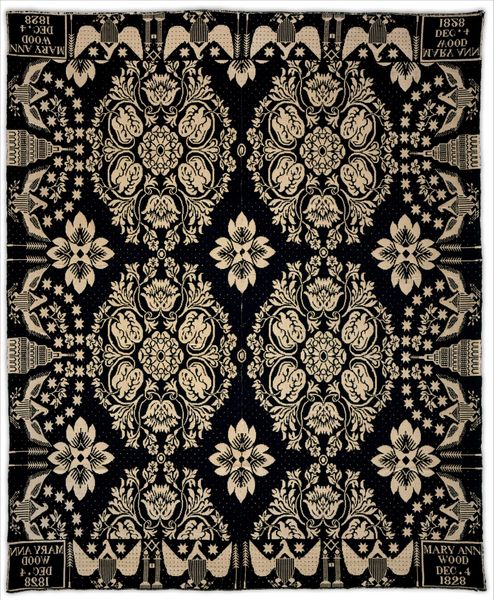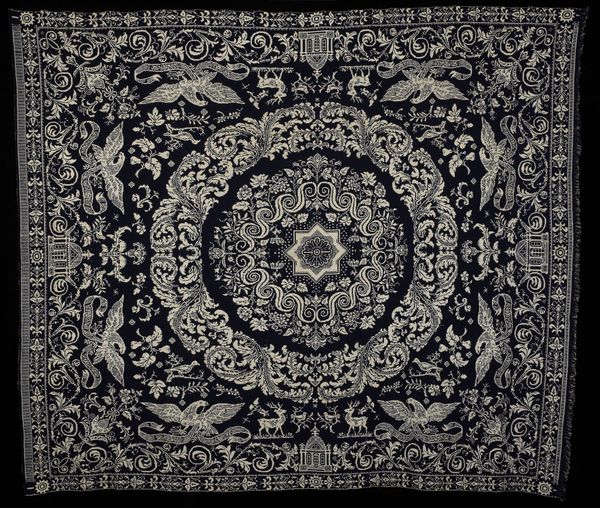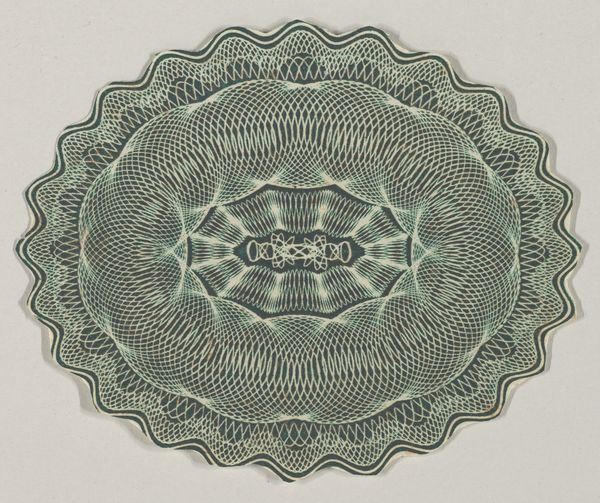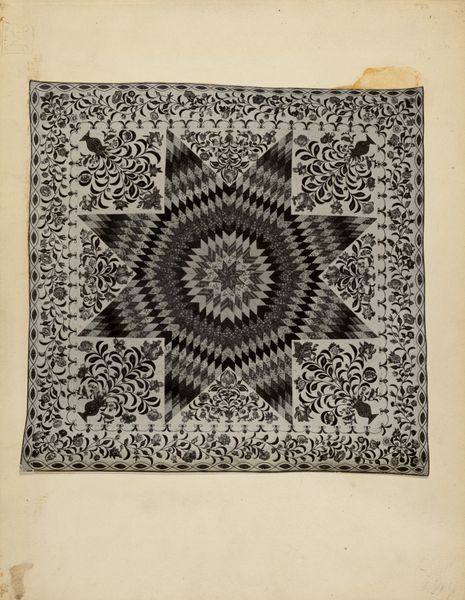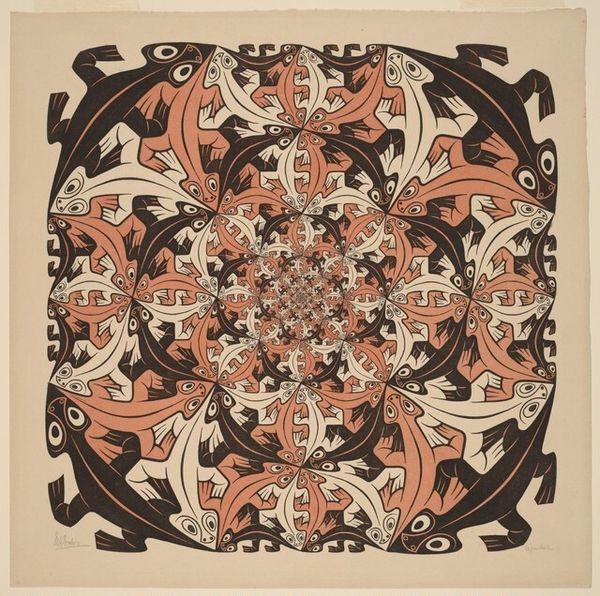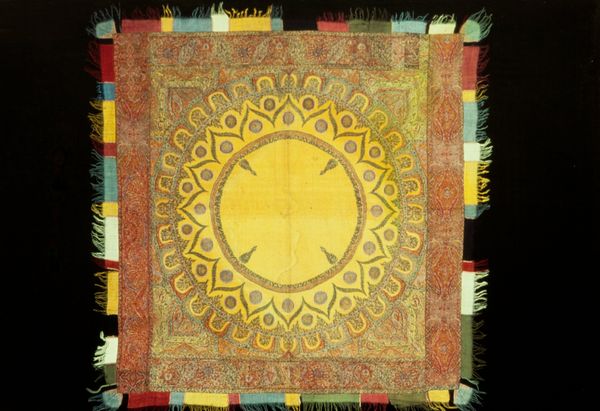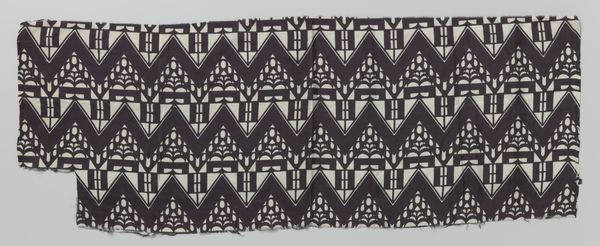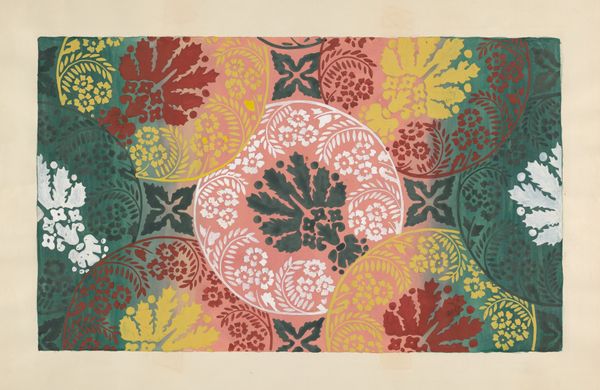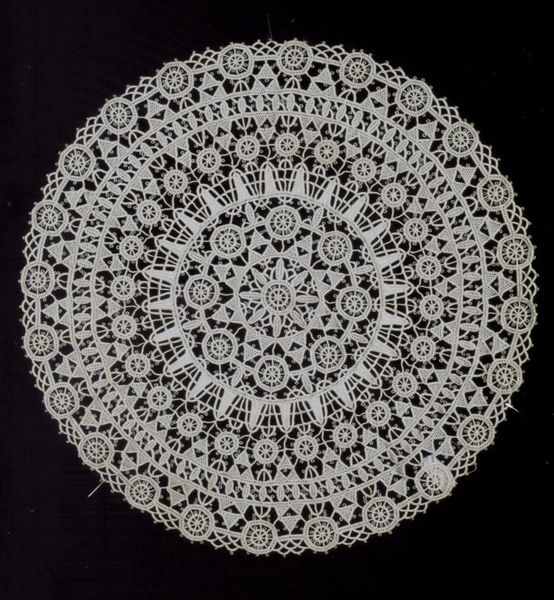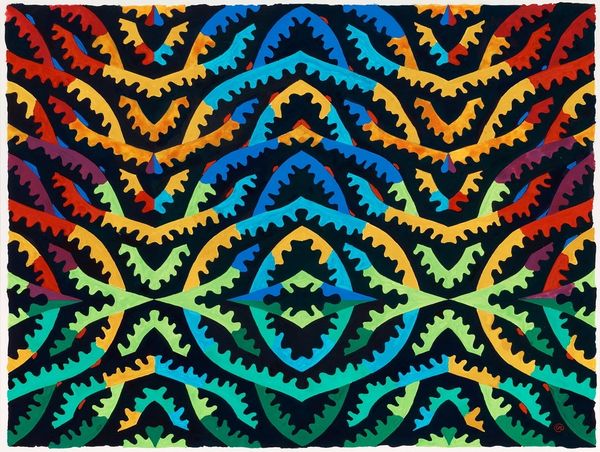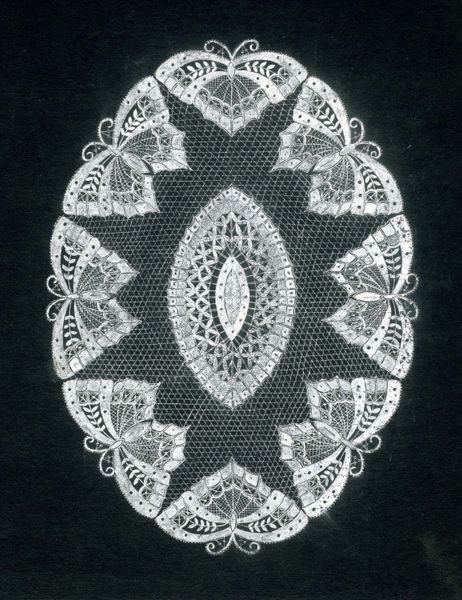
drawing
#
drawing
#
naturalistic pattern
#
organic
#
art-nouveau
#
man-made pattern
#
abstract pattern
#
organic pattern
#
geometric
#
repetition of pattern
#
intricate pattern
#
pattern repetition
#
layered pattern
#
funky pattern
#
combined pattern
Dimensions: height 85 mm, width 109 mm
Copyright: Rijks Museum: Open Domain
Editor: Here we have Julie de Graag's "The Month of May: Rosette with Stylized Leaves," a drawing from 1918, here at the Rijksmuseum. The meticulousness of the linework is mesmerizing. What catches your eye when you look at it? Curator: It’s interesting to consider the production of this work, made during wartime. Resources would have been scarce, dictating a need for economy of means. A drawing offered a less resource-intensive artistic avenue compared to say, sculpture or oil painting. Look closely at the patterns: How do these repeated motifs become a reflection of the time and materials available to De Graag? Editor: So, it's less about the artist's intention and more about the practical realities they faced? Curator: Not exclusively, but understanding the conditions of artistic labor provides a powerful lens. The choice of materials—paper, ink—their accessibility and cost, significantly shape the final form. Notice the intense, almost obsessive quality of the linework; is it possible this reflects the labour of women producing these works? What was it that afforded women the opportunity to develop such skills and use these in this way? Editor: That's a fascinating point. The drawing almost feels like a textile design, a print maybe, referencing applied arts that were accessible as work for women. I hadn't considered the relationship between art, labor, and gender in this context. Curator: Exactly! Think about the social function of this kind of imagery at the time. It may appear purely decorative, but considering how, and by whom it was made, and what purpose this design might then serve, shifts the interpretation away from mere aesthetic pleasure. Perhaps this pattern offered a glimpse of growth and beauty amid difficult times? What function and need for beauty in decoration were available, when labour in factories to provide the war machine also became critical? Editor: I see what you mean. Focusing on the context gives so much meaning. It becomes much more powerful than just a pretty design. Thank you! Curator: Indeed, it reveals the artwork's deeper connection to social conditions, gendered labour, and materiality. It provokes the question of women’s place within wartime labour but then subsequently artistic license.
Comments
No comments
Be the first to comment and join the conversation on the ultimate creative platform.
